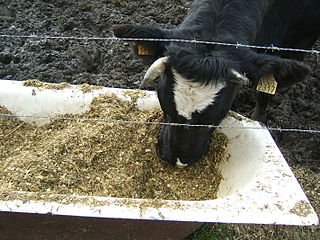Livestock Feed: Growing Your Own Animal Feed & Fodder for Self-Sufficiency
The increasing cost of livestock feed, and the desire to be able to feed your livestock, no matter what happens, demands having different sources of supply. If you want to plant your own animal feed, as long as you have space to farm, this should not be a problem. You can feed domestic animals homegrown feed as fodder, silage or on its own depending on the animal. Silage is especially important here as this fermented food source can last for a long time and most ruminants are fine with eating this.
Types of Livestock Feed
When it comes to feeding domestic animals such as cows, goats, pigs, rabbits and poultry, the choices are many. The main types of food include:
Fodder
This refers to hay, grains, legumes and straw that you take to the animals rather than allowing them out in the field to find food for themselves. One easy way to grow it is to farm sprouting fodder using grains such as barley, oats and wheatgrass. This kind of fodder can feed a wide variety of animals such as chickens, cows, goats and rabbits. Another good thing about sprouted fodder is the high nutritional content.
Corn
Growing corn is easy and the best thing is after harvesting it, you can keep it in storage. Hickory King is a great variety to grow and use as animal feed. When using it to feed poultry, wait until the ears of corn are dry, then husk them and store in appropriate containers until you are ready to use as poultry feed. Mature corn that is not yet dry can also be a great source of nutrition for animals such as pigs and cattle. Goats also love the husks and stalks so hardly anything ends up in the garbage.
Sugar beets
Cattle and other ruminant animals will eat this plant and it makes good silage. This is good since it is easy to grow and does not take a lot of effort.
Kale
Kale is good as animal food whether it is fresh or after you store it for a while. To keep these for out of season feeding, place them in bales and add to silage.
Many cover crops such as alfalfa, kale, mustards and clover make excellent animal food. Other crops that can make up your homegrown animal food store are:
- Grains and cereals such as rye
- Sunflower and other seeds
- Pumpkin and squash; both the vegetables and the seeds are edible
- Root venerates and tubers such as carrots and potatoes make great animal food
When feeding vegetables to poultry, ensure that they have grit or sand to pick through to aid digestion.
How to Store ‘Home Grown’ Livestock Feed
Being able to grow your own animal feed is one thing, but storing it for a long period is another matter. One of the basic needs in any disaster is a steady supply of necessary tools and supplies. If you plan to rear animals for food, then you will need to have the means to feed them if you cannot buy or grow your own food.
It is possible to store many animal feeds that you prepare yourself. In times of disaster or other events that make it difficult to purchase livestock feed, being able to grow your own is vital. The cost savings when comparing commercial and homegrown animal feed is a bonus in times of drought.
Some feed will need special storage units and methods. Corn needs to be in rat-proof containers, otherwise rodents will destroy your supply. Since corn is high in moisture, it can also develop mold, which results in spoilage, making the feed unusable. When storing sugar beets, use a container with a cover and add lots of dry straw, which will help reduce the moisture content. Some experts recommend placing at least four times as much dry material as sugar beet in the container.
Knowing how much to store will depend on the number, age and size of your animals and of course the types you are rearing. Having a constant/ready supply of livestock feed requires planning and organizing. The benefits of having your own animal garden will be evident later on. Not only will it cut your feed bill, it will also ensure that your domestic animals have food during a shortage, and you will have a food supply. Another good thing about growing your own animal food is that you can control the use of pesticides.
Return from Livestock feed to Backyard Farming






New! Comments
Have your say about what you just read! Leave me a comment in the box below.